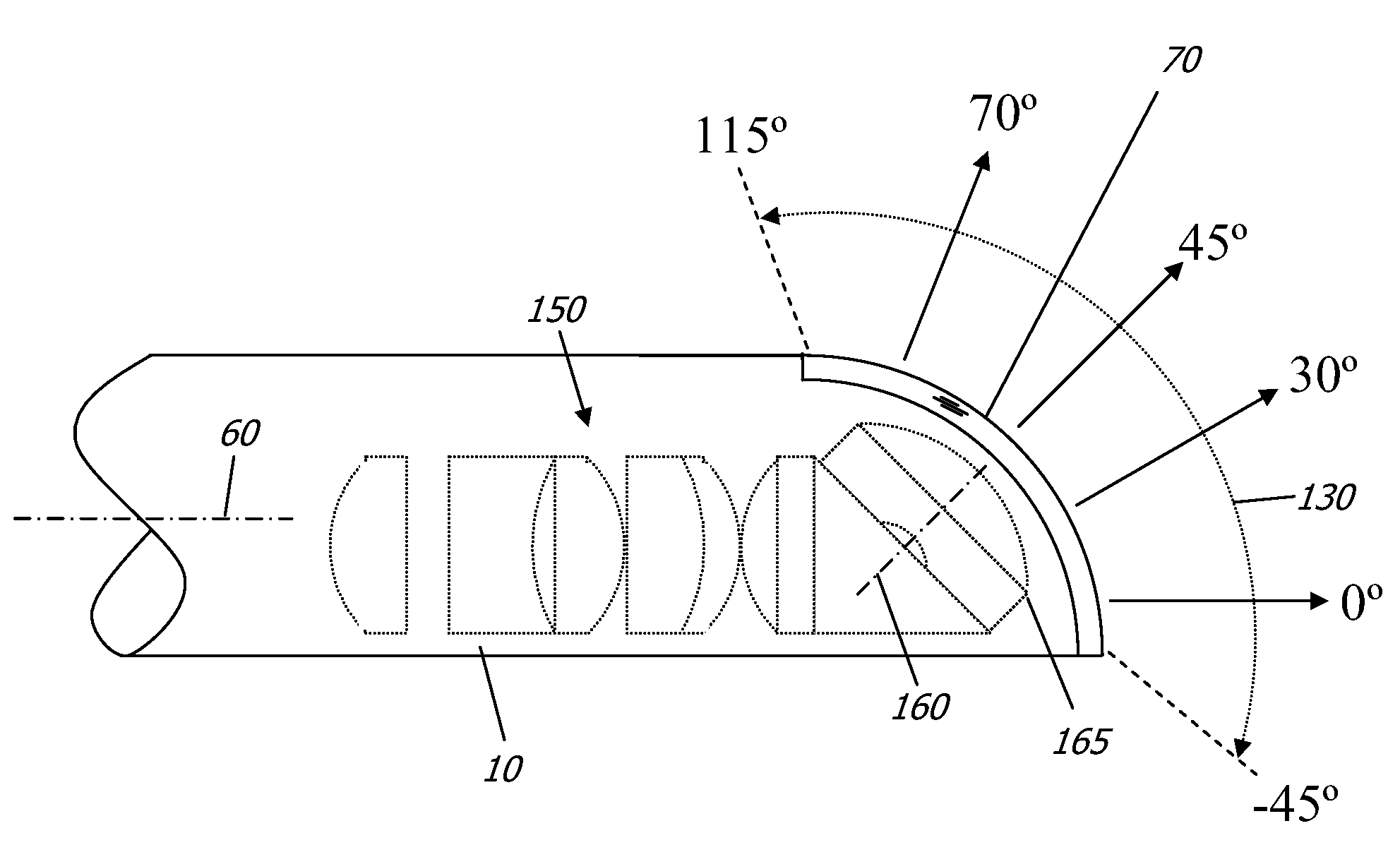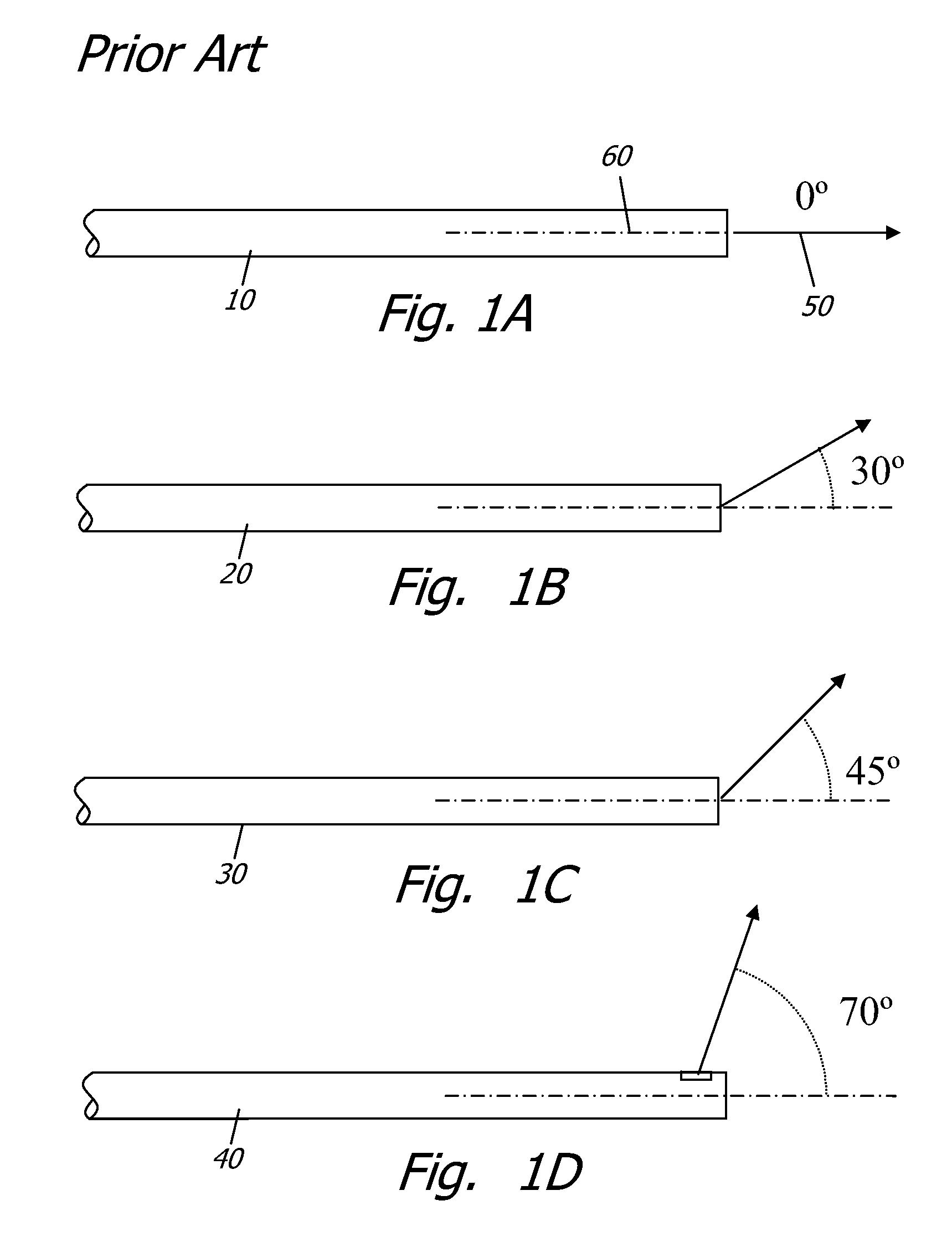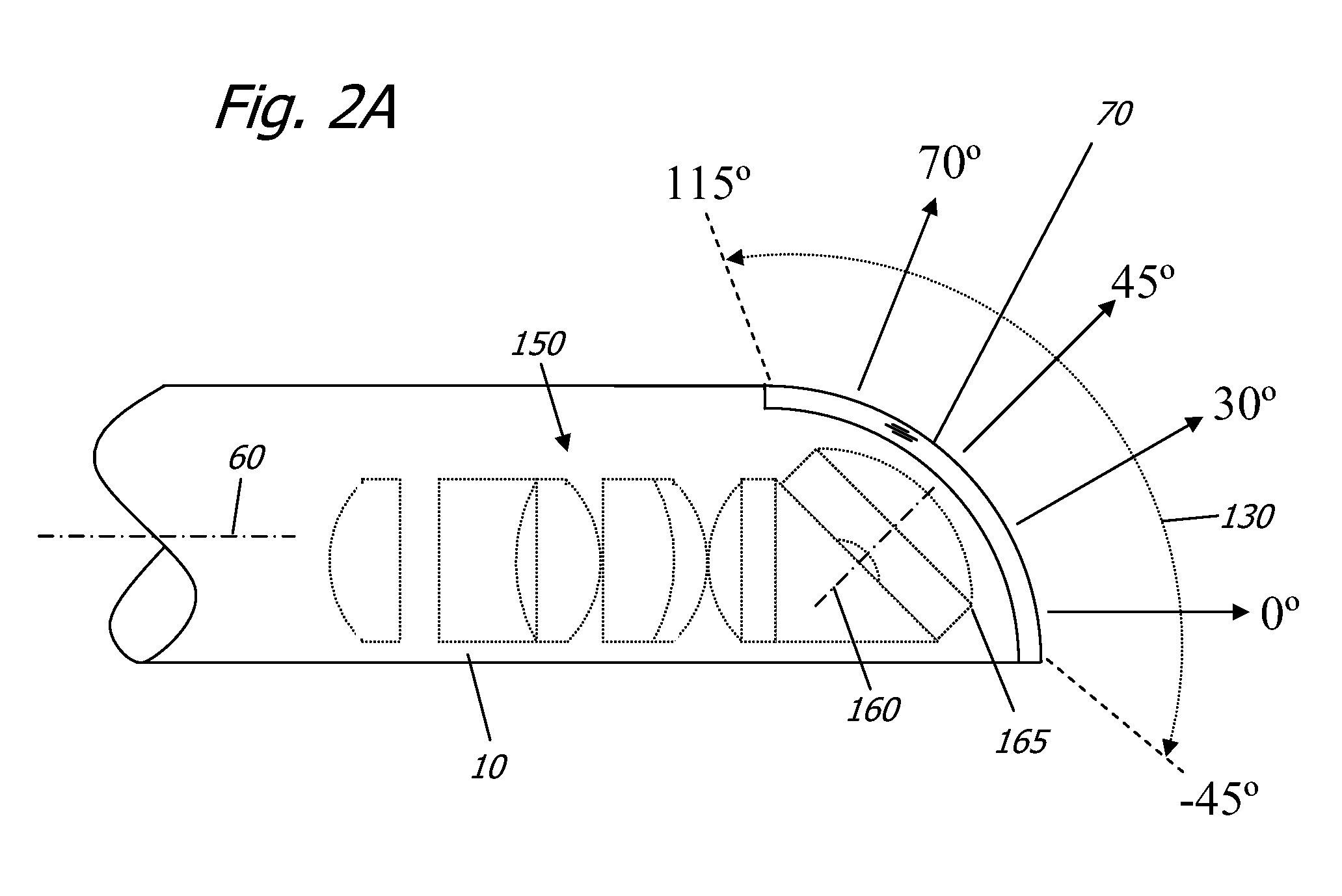Solid State Variable Direction of View Endoscope
a variable direction, endoscope technology, applied in the field of solid state variable direction of view endoscope, can solve the problems of complicated and costly fabrication of variable direction of view scope, inability to easily move the endoscope shaft, and inability to significantly manipulate the endoscope without injuring the patient, so as to achieve the effect of avoiding disorientation
- Summary
- Abstract
- Description
- Claims
- Application Information
AI Technical Summary
Benefits of technology
Problems solved by technology
Method used
Image
Examples
Embodiment Construction
[0023]The following detailed description illustrates the invention by way of example, not by way of limitation of the principles of the invention. This description will enable one skilled in the art to make and use the invention, and describes several embodiments, adaptations, variations, alternatives and uses of the invention, including what is presently believed to be the best mode of carrying out the invention.
[0024]FIG. 2A and 2B depict a preferred embodiment of the present invention. FIG. 2A, depicts a distal tip 10 of an endoscope with a longitudinal axis 60, a viewing window 70, a wide angle lens system 165 with optical center 160 and a transmission system 150. The optical center 160 is angularly offset from the longitudinal axis 60 of the endoscope 10 and covers a viewing range 130 of 160 degrees from −45 to +115 degrees relative to the longitudinal axis. From this configuration, the wide angle lens system 165 simultaneously gathers an endoscopic image field 130 that spans t...
PUM
 Login to View More
Login to View More Abstract
Description
Claims
Application Information
 Login to View More
Login to View More - R&D
- Intellectual Property
- Life Sciences
- Materials
- Tech Scout
- Unparalleled Data Quality
- Higher Quality Content
- 60% Fewer Hallucinations
Browse by: Latest US Patents, China's latest patents, Technical Efficacy Thesaurus, Application Domain, Technology Topic, Popular Technical Reports.
© 2025 PatSnap. All rights reserved.Legal|Privacy policy|Modern Slavery Act Transparency Statement|Sitemap|About US| Contact US: help@patsnap.com



